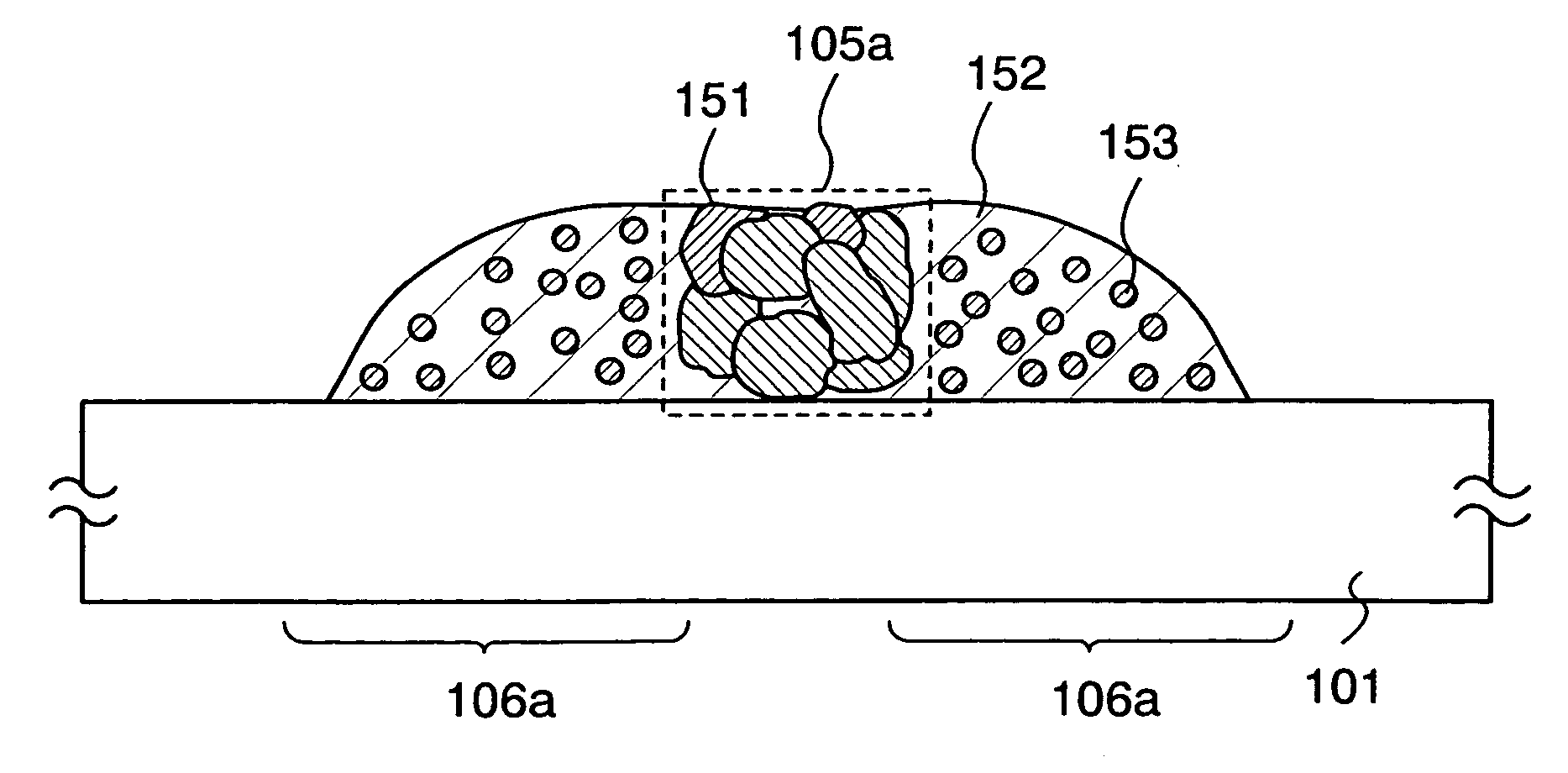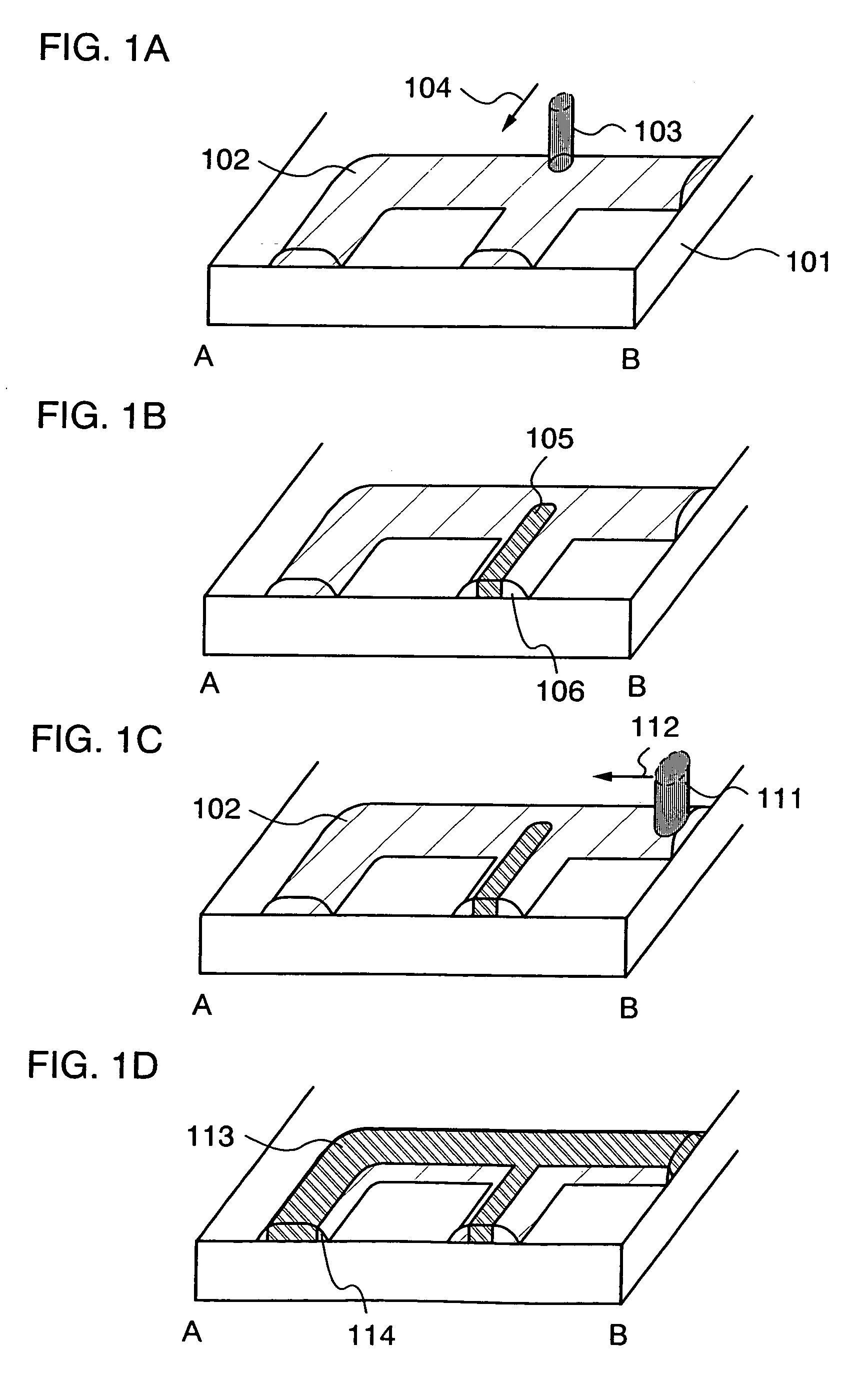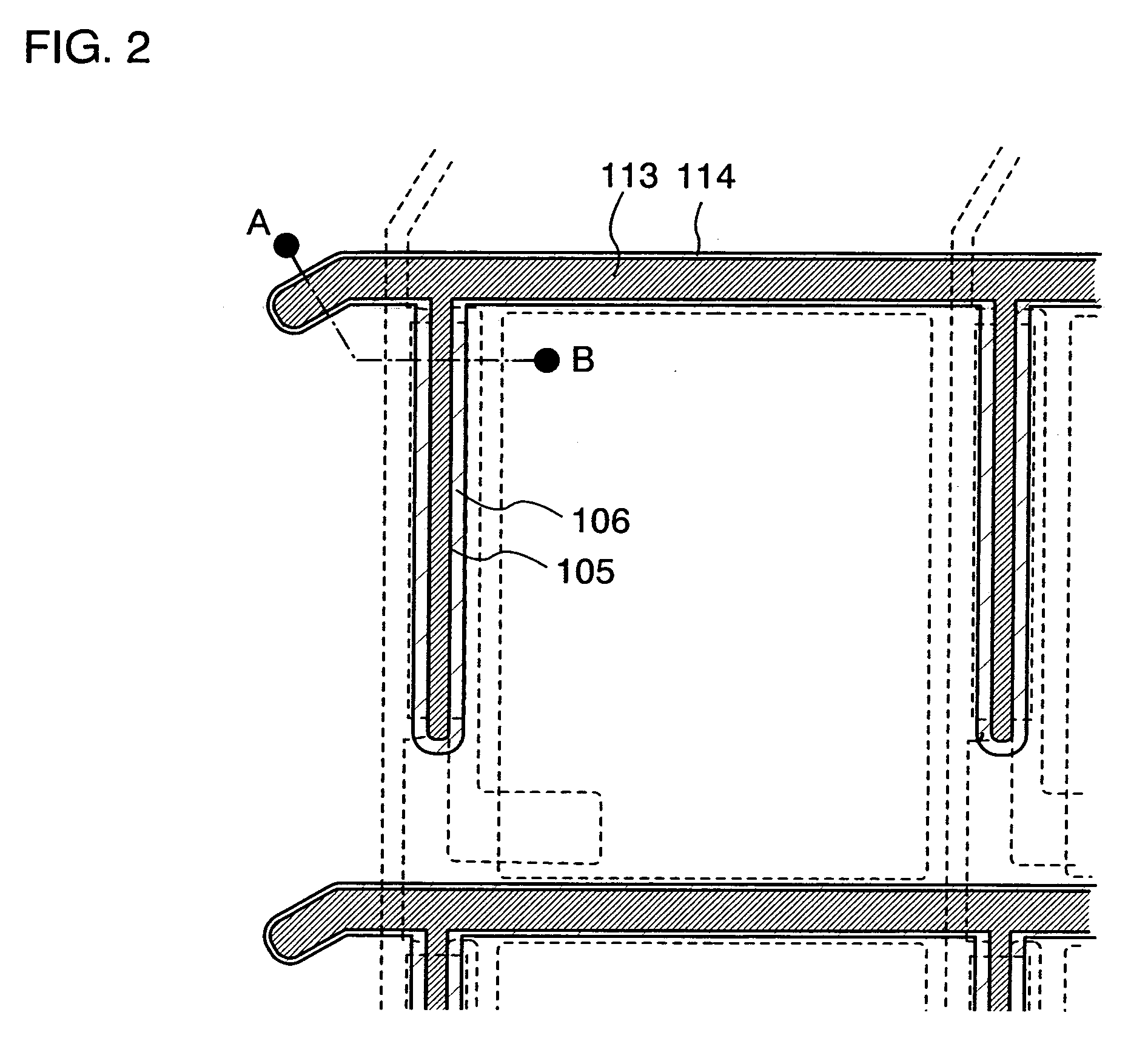Wiring substrate, semiconductor device and manufacturing method thereof
a technology of wiring substrate and semiconductor device, which is applied in the direction of conductive pattern formation, sustainable manufacturing/processing, and final product manufacturing, etc., can solve the problems of low throughput, waste of all materials of wiring or film pattern and resist material, and large number of steps of forming wiring or mask pattern, etc., to achieve high yield, high accuracy, and improve yield
- Summary
- Abstract
- Description
- Claims
- Application Information
AI Technical Summary
Benefits of technology
Problems solved by technology
Method used
Image
Examples
embodiment mode 1
[0067] In Embodiment Mode 1, a process for forming a wiring having a thin width by irradiation of a laser beam (hereinafter referred to as laser light) is described with reference to FIGS. 1A to 1D, 2 and 3A to 3C.
[0068]FIG. 2 is a top view of a substrate 101 in which pixels are arranged in matrix. On the substrate 101, a second conductive layer 113 serving as a gate wiring of a semiconductor element that is to be formed later and a first conductive layer 105 serving as a gate electrode to be connected thereto are shown by a solid line. Note that a dashed line shows a source wiring, a semiconductor region, a source electrode, a drain electrode, a pixel electrode and the like of the semiconductor element that is to be formed later.
[0069]FIGS. 1A to 1D are each a perspective view of a cross-section taken along A-B in FIG. 2. As shown in FIG. 1A, a first pattern material is discharged on the substrate 101 by a droplet discharging method and dried to form a first pattern 102. Note tha...
embodiment mode 2
[0096] Embodiment Mode 2 describes a manufacturing method of a semiconductor element with reference to FIGS. 4A to 4F. In this embodiment mode, a channel etch type TFT of a bottom gate TFT as a semiconductor element is described.
[0097] As shown in FIG. 4A, a first pattern 202 is formed on a substrate 201 by a droplet discharging method. The material of the first pattern 102 shown in Embodiment Mode 1 can be used appropriately for the material of the first pattern 202.
[0098] In this embodiment mode, the first pattern 202 is formed by selectively discharging Ag paste dispersed with silver particles of several nm.
[0099] Then, a part of the first pattern 202 is irradiated with laser light 203 using a laser beam directly-drawing apparatus to form a first conductive layer 211 as shown in FIG. 4B. At this time, in a region that is not irradiated with the laser light 203, the Ag paste remains. Hereinafter, the region where the Ag paste remains is shown as an organic resin layer 212 dispe...
embodiment mode 3
[0116] Embodiment Mode 3 describes a channel protective type TFT of a bottom gate TFT as a semiconductor element with reference to FIGS. 5A to 5F.
[0117] As shown in FIG. 5A, a first conductive layer 211 serving as a gate electrode and an organic resin layer 212 dispersed with metal particles, which is formed on the opposite sides of the first conductive layer 211 are formed on a substrate 201 according to the same steps as in Embodiment Mode 2. After that, a first insulating layer 221 to serve as a gate insulating film and a first semiconductor film 222 are formed. Then, a protective film 301 is formed in a region that exists over the first semiconductor film 222 and overlaps the first conductive layer 211. The formation method and material of the protective film 301 can be similar to those of the first mask pattern 224 shown in Embodiment Mode 2.
[0118] As shown in FIG. 5B, a second semiconductor film (a conductive semiconductor film) 302 is formed. The second semiconductor film 3...
PUM
| Property | Measurement | Unit |
|---|---|---|
| width | aaaaa | aaaaa |
| width | aaaaa | aaaaa |
| width | aaaaa | aaaaa |
Abstract
Description
Claims
Application Information
 Login to View More
Login to View More - R&D
- Intellectual Property
- Life Sciences
- Materials
- Tech Scout
- Unparalleled Data Quality
- Higher Quality Content
- 60% Fewer Hallucinations
Browse by: Latest US Patents, China's latest patents, Technical Efficacy Thesaurus, Application Domain, Technology Topic, Popular Technical Reports.
© 2025 PatSnap. All rights reserved.Legal|Privacy policy|Modern Slavery Act Transparency Statement|Sitemap|About US| Contact US: help@patsnap.com



